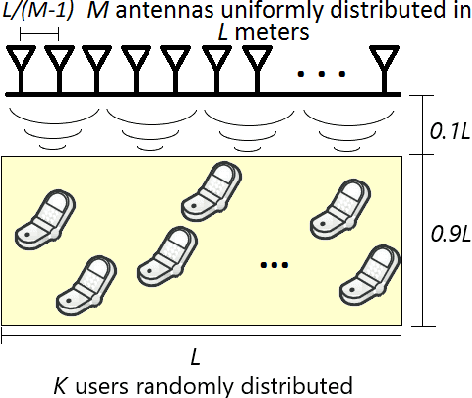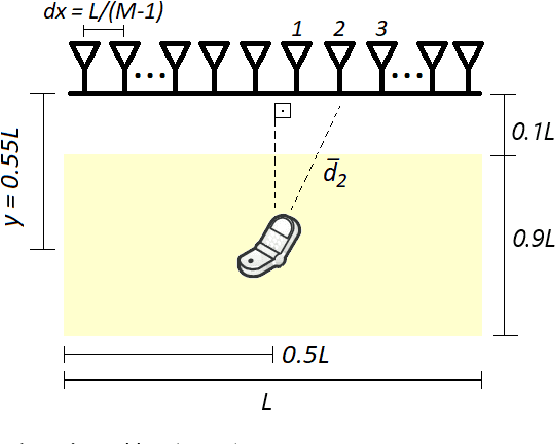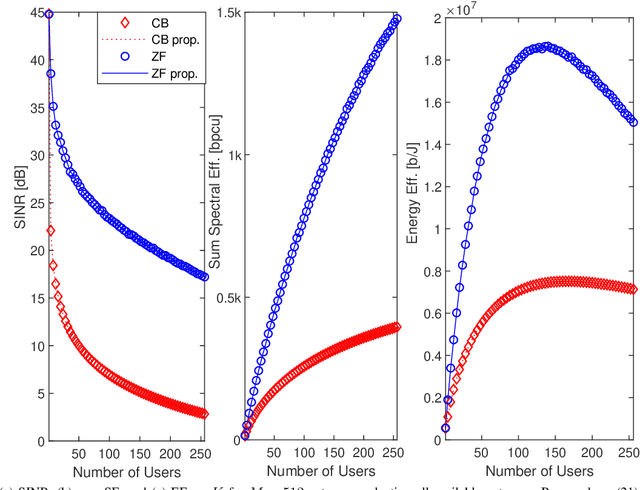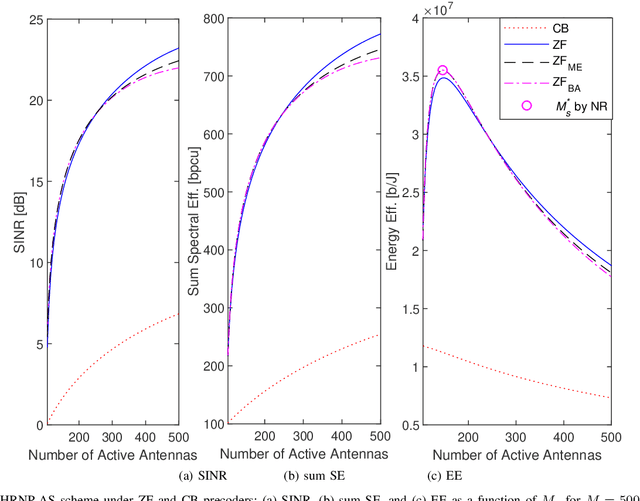Abolfazl Amiri
Revisiting Data Recovery Loops in 6G Networks
Apr 11, 2024Abstract:Mechanisms for data recovery and packet reliability are essential components of the upcoming 6th generation (6G) communication system. In this paper, we evaluate the interaction between a fast hybrid automatic repeat request (HARQ) scheme, present in the physical and medium access control layers, and a higher layer automatic repeat request (ARQ) scheme which may be present in the radio link control layer. Through extensive system-level simulations, we show that despite its higher complexity, a fast HARQ scheme yields > 66 % downlink average user throughput gains over simpler solutions without energy combining gains and orders of magnitude larger gains for users in challenging radio conditions. We present results for the design trade-off between HARQ and higher-layer data recovery mechanisms in the presence of realistic control and data channel errors, network delays, and transport protocols. We derive that, with a suitable design of 6G control and data channels reaching residual errors at the medium access control layer of 5 E-5 or better, a higher layer data recovery mechanism can be disabled. We then derive design targets for 6G control channel design, as well as promising enhancements to 6G higher layer data recovery to extend support for latency-intolerant services.
Performance of Joint XR and Best Effort eMBB Traffic in 5G-Advanced Networks
Jan 20, 2023Abstract:In this paper, we address the joint performance of eXtended reality (XR) and best effort enhanced mobile broadband (eMBB) traffic for a 5G-Advanced system. Although XR users require stringent throughput and latency performance, operators do not lose significant additional network capacity when adding XR users to an eMBB dominated network. For instance, adding an XR service at 45 Mbps with 10 ms packet delay budget, yields close to a 45 Mbps drop in eMBB capacity. In an XR only network layer, we show how the capacity in number of supported XR users depends significantly on the rate but also the latency budget. We show also how the XR service capacity is significantly reduced in the mixed service setting as the system goes into full load and other-cell interference becomes significant. The presented results can be used by cellular service providers to assess their networks performance of XR traffic based on their current eMBB performance, or as input to dimensioning to be able to serve certain XR traffic loads.
Extended Reality over 3GPP 5G-Advanced New Radio: Link Adaptation Enhancements
Oct 26, 2022Abstract:One of the rapidly emerging services for fifth-generation (5G)-Advanced is eXtended Reality (XR) which combines several immersive experiences and cloud gaming services. Those services are demanding as they call for relatively high data rates under tight latency constraints, sometimes also referred to as dependable real-time applications. Supporting as many XR users per cell requires highly efficient radio solutions. In this paper, we propose an enhanced channel quality indicator (CQI) that results in a better link adaptation to unleash the full performance potential of code block group (CBG) based transmissions for XR cases. We present both an analytical analysis of the related problems and solutions, as well as an extensive dynamic system-level performance assessment in line with the 3rd generation partnership project (3GPP)-defined advanced simulation methodologies. Our results show an increased XR system capacity of 17% to 33% as compared to what can be supported by current 5G systems with baseline CQI schemes. We also present enhanced CQI complexity-reducing techniques based on derived closed-form expressions that are attractive to the user equipment (UE) implementation.
Enhanced Link Adaptation for Extended Reality Code Block Group based HARQ Transmission
Aug 25, 2022



Abstract:Extended Reality (XR) is one of the most important media applications in 5\textsuperscript{th} Generation (5G) and 5G-Advanced. XR traffic is characterized by high data rates with bounded latency constraints, which is challenging for bandwidth-constrained wireless systems. In this paper, we propose two new low-complexity enhanced Outer Loop Link Adaptation (eOLLA) algorithms that significantly improve the downlink system capacity in terms of satisfied XR users. The algorithms exploit the Code Block Group (CBG)-based Hybrid Automatic Repeat reQuest (HARQ) multi-bit feedback for minimizing the radio resource utilization in retransmissions by controlling the first and second block error operation points. Evaluation by means of both analytical assessment and realistic system-level simulations verifies that the proposed eOLLA algorithms increase system capacity by up to \SI{67}{\percent} compared to known OLLA algorithms with traditional transport block based HARQ.
QoS-Aware User Scheduling in Crowded XL-MIMO Systems Under Non-Stationary Multi-State LoS/NLoS Channels
May 13, 2022



Abstract:Providing minimum quality-of-service (QoS) in crowded wireless communications systems, with high user density, is challenging due to the network structure with limited transmit power budget and resource blocks. Smart resource allocation methods, such as user scheduling, power allocation, and modulation and coding scheme selection, must be implemented to cope with the challenge. Aiming to enhance the number of served users with minimum QoS in the downlink (DL) channel of crowded extra-large scale massive multiple-input multiple-output (XL-MIMO) systems, in this paper we propose a QoS-aware joint user scheduling and power allocation technique. The proposed technique is constituted by two sequential procedures: the clique search-based scheduling (CBS) algorithm for user scheduling followed by optimal power allocation with transmit power budget and minimum achievable rate per user constraints. To accurately evaluate the proposed technique in the XL-MIMO scenario, we propose a generalized non-stationary multi-state channel model based on spherical-wave propagation assuming that users under LoS and NLoS transmission coexist in the same communication cell. Such model considers that users under different channel states experience different propagation aspects both in the multipath fading model and the path loss rule. Numerical results on the achievable sum-rate, number of scheduled users, and distribution of the scheduled users reveal that the proposed CBS algorithm provides a fair coverage over the whole cell area, achieving remarkable numbers of scheduled users when users under the LoS and NLoS channel states coexist in the communication cell.
Decentralized Design of Fast Iterative Receivers for Massive and Extreme-Large MIMO Systems
Jul 23, 2021



Abstract:Despite the extensive use of a centralized approach to design receivers at the base station for massive multiple-input multiple-output (M-MIMO) systems, their actual implementation is a major challenge due to several bottlenecks imposed by the large number of antennas. One way to deal with this problem is by fully decentralizing the classic zero-forcing receiver across multiple processing nodes based on the gradient descent method. In this paper, we first explicitly relate this decentralized receiver to a distributed version of the Kaczmarz algorithm and to the use of the successive interference cancellation (SIC) philosophy to mitigate the residual across nodes. In addition, we propose two methods to further accelerate the initial convergence of these iterative decentralized receivers by exploring the connection with the Kaczmarz algorithm: 1) a new Bayesian distributed receiver, which can eliminate noise on an iteration basis; 2) a more practical method for choosing the relaxation parameter. The discussion also consider spatial non-stationarities that arise when the antenna arrays are extremely large (XL-MIMO). We were able to improve the numerical results for both spatially stationary and non-stationary channels, but mainly the non-stationary performance can still be improved compared to the centralized ZF receiver. Future research directions are provided with the aim of further improving the applicability of the receiver based on the principle of successive residual cancellation (SRC).
Uncoordinated and Decentralized Processing in Extra-Large MIMO Arrays
Mar 11, 2021


Abstract:We propose a decentralized receiver for extra-large multiple-input multiple-output (XL-MIMO) arrays. Our method operates with no central processing unit (CPU) and all the signal detection tasks are done in distributed nodes. We exploit a combined message-passing framework to design an uncoordinated detection scheme that overcomes three major challenges in the XL-MIMO systems: computational complexity, scalability and non-stationarities in user energy distribution. Our numerical evaluations show a significant performance improvement compared to benchmark distributed methods while operating very close to the centralized receivers.
Quasi-Distributed Antenna Selection for Spectral Efficiency Maximization in Subarray Switching XL-MIMO Systems
Feb 23, 2021



Abstract:In this paper, we consider the downlink (DL) of a zero-forcing (ZF) precoded extra-large scale massive MIMO (XL-MIMO) system. The base-station (BS) operates with limited number of radio-frequency (RF) transceivers due to high cost, power consumption and interconnection bandwidth associated to the fully digital implementation. The BS, which is implemented with a subarray switching architecture, selects groups of active antennas inside each subarray to transmit the DL signal. This work proposes efficient resource allocation (RA) procedures to perform joint antenna selection (AS) and power allocation (PA) to maximize the DL spectral efficiency (SE) of an XL-MIMO system operating under different loading settings. Two metaheuristic RA procedures based on the genetic algorithm (GA) are assessed and compared in terms of performance, coordination data size and computational complexity. One algorithm is based on a quasi-distributed methodology while the other is based on the conventional centralized processing. Numerical results demonstrate that the quasi-distributed GA-based procedure results in a suitable trade-off between performance, complexity and exchanged coordination data. At the same time, it outperforms the centralized procedures with appropriate system operation settings.
Antenna Selection for Improving Energy Efficiency in XL-MIMO Systems
Sep 05, 2020



Abstract:We consider the recently proposed extra-large scale massive multiple-input multiple-output (XL-MIMO) systems, with some hundreds of antennas serving a smaller number of users. Since the array length is of the same order as the distance to the users, the long-term fading coefficients of a given user vary with the different antennas at the base station (BS). Thus, the signal transmitted by some antennas might reach the user with much more power than that transmitted by some others. From a green perspective, it is not effective to simultaneously activate hundreds or even thousands of antennas, since the power-hungry radio frequency (RF) chains of the active antennas increase significantly the total energy consumption. Besides, a larger number of selected antennas increases the power required by linear processing, such as precoding matrix computation, and short-term channel estimation. In this paper, we propose four antenna selection (AS) approaches to be deployed in XL-MIMO systems aiming at maximizing the total energy efficiency (EE). Besides, employing some simplifying assumptions, we derive a closed-form analytical expression for the EE of the XL-MIMO system, and propose a straightforward iterative method to determine the optimal number of selected antennas able to maximize it. The proposed AS schemes are based solely on long-term fading parameters, thus, the selected antennas set remains valid for a relatively large time/frequency intervals. Comparing the results, we find that the genetic-algorithm based AS scheme usually achieves the best EE performance, although our proposed highest normalized received power AS scheme also achieves very promising EE performance in a simple and straightforward way.
 Add to Chrome
Add to Chrome Add to Firefox
Add to Firefox Add to Edge
Add to Edge